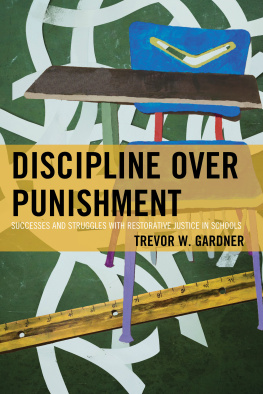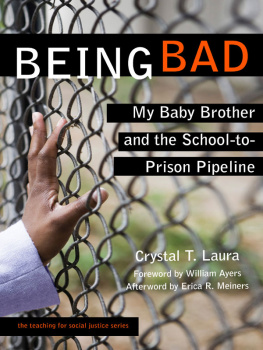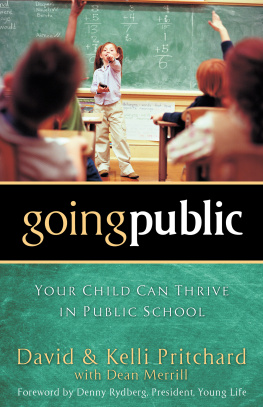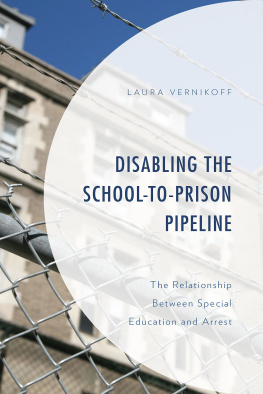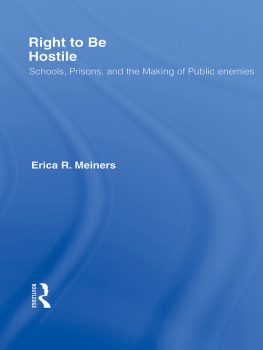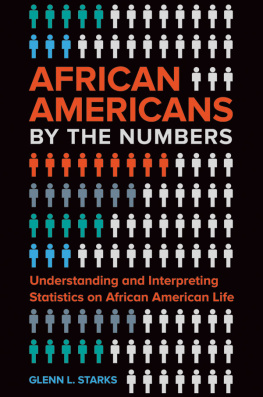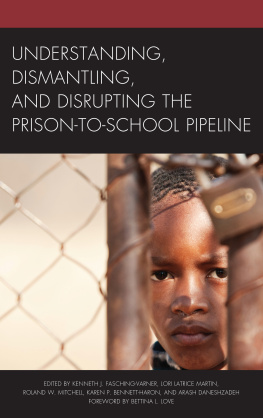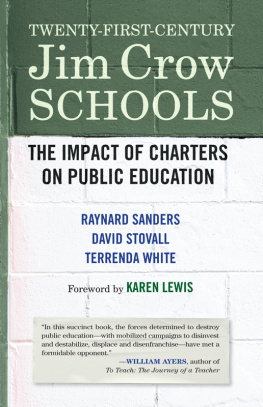ACKNOWLEDGMENTS
In writing this book, I aimed to keep a promise I made to Albert Chui Clark, who put his trust in me, that I would tell the story of the Prison School. I am indebted to him and to Jamal and Spider and their families, who invited me into their lives and made it possible. I also want to thank Orissa Arendt, the late Llewelyn Soniat, and the staff of Juvenile Justice Project of Louisiana, who helped me along the way.
Two outstanding mentors, Pedro Noguera and Angela Y. Davis, supported this project from its infancy. They each influenced my thinking about what equality means in theory and practice, and I am deeply humbled by the opportunity I have had to work with them. Didi Heller, my undergraduate advisor, inspired me to find beauty in reading and writing; Anne Haas Dyson taught me the art of ethnography; and the late John Hurst remembered to take me out on a boat when I needed a new perspective. I wish to thank Mona Lynch, Jonathan Simon, Carol Stack, Dick Walker, Michael Omi, Torin Monahan, Aaron Kupchik, Michael Musheno, and Jessica Fields, who helped me situate the work in a larger community of scholarship.
I was exceptionally fortunate to have been given support for my research from San Francisco State University through the Affirmation Award and the Presidents Award. I completed the manuscript with funding from the Office of Diversity and Faculty Development at the University of California, Los Angeles, and with support from the Civil Rights Project. At UCLA, Christine Littleton, Ali Behdad, Gary Orfield, and Patricia Gandara provided assistance in critical stages of the writing.
Several anonymous reviewers provided astute comments on the manuscript and shaped the project in significant ways. Please accept my sincere thanks for engaging in the work and contributing to it so productively. I am particularly appreciative of Dylan Rodriguez and Peter Scharf, whose openness and keen intellect represent the very best of the scholarly community. Maura Roessner, my editor at the University of California Press, ushered this project into print. I cannot imagine a more thoughtful or caring editor. Her support and advocacy were unyielding, and, just as importantly, she offered constructive criticism when it was necessary. I wish to thank Jack Young at UC Press for writing an impassioned call to arms when the manuscript was due. Thanks as well to all the support staff at the University of California Press, and especially Richard Earles, who worked behind the scenes to bring this book into the world. It was my honor to collaborate on the graphics with Rigo 23, who drew all the original charts in the book by hand, and with Ingo Giezendanner, AKA GRRRR, who drew the cover image of the Orleans Parish Prison.
I began this book while I was a graduate student at the University of California, Berkeley, where I was surrounded by some of the most thoughtful, diligent, and hilariously clever people I have ever known. Thank you to Sarah Hamill, Mike Kunichika, Sylvan Brackett, Jenny Wapner, Ariel Evnine, Barrie Brouse, Diana Anders, Andrew Weiner, Freya Read, Heather Nicholls, Elizabeth Meyer, Bernie Jungle, Rachel Stevenson, Jessica Green, Steve Green, Catherine Geanuracos, Kristin Hull, and Myriam Casimir. Lucia Neare, you get five stars and a cake for being so good. Likewise, Nancy Prior. Helen Mirra, Natascha Unkart, Mike Milley, Lucy Jordan, Lisa Tarlow, Alexa Green, Miranda July, and Mike Mills, you are truly excellent friends to have. I found my way in New Orleans with the help of Annie and Nick Pieper, Betty DeCell, and the inimitable Jann Darsie and Seor George Gattoni. John Allen was always ready with a plan B.
I am deeply grateful to my family, especially my parents, the late Elizabeth McCrary Simmons, and my father, Charles Harriss Simmons. My mother modeled kindness in all things and gave me the freedom to shape my future in ways that made sense, at times, only to me. My father stood behind me at every moment and pushed me forward with his endless curiosity and his belief that no one in this world is a stranger. Special thanks go to my sister Ann, a giant in my life for her ethics, care, and compassion. This book is indelibly marked by my enduring love and respect for the late Ida Mae Williams.
I dedicate this book to Louise Hornby. That is ultimately much easier than describing her role in this. So that it is written down somewhere for my children, Philo and Queenie, Ill write it here: Find something, or many things, that you care about; it will work out somehow.
Finally, thanks to Otto and Ladle. They spent almost as much time on this book as I did.
Introduction
In 2002, the criminal sheriff in New Orleans, Louisiana, opened a new public school at the Orleans Parish Prison. The school enrolled a group of African American boys who had previously been removed from regular public schools, most for nonviolent disciplinary offenses such as tardiness. Five days a week, these students were escorted to the school for nearly twelve-hour days on the prison grounds, despite the fact that they had not been charged with, tried for, or convicted of anything other than status offenses actions designated as lawbreaking only when committed by certain groups of people. The building that contained their school was a low-slung space in the shadows of the larger prison complex. The students were taught by inexperienced and uncredentialed teachers relying on a remedial curriculum and were surveilled and disciplined by the sheriffs deputies, who monitored the students movements and responded to all disruptions, large and small. Locals called it the Prison School.
All too frequently, when I have told the story of the Prison School, it has been dismissed as an anomaly, symptomatic of New Orleanss own peculiarity, marginality, and precariousness. The citys unique cartography, demanding climate, and relative geographic isolation seem enough to set it apart from other American cities, and the spectacle of Mardi Gras and the jubilant local bar and music scene only elaborate on this notion.


